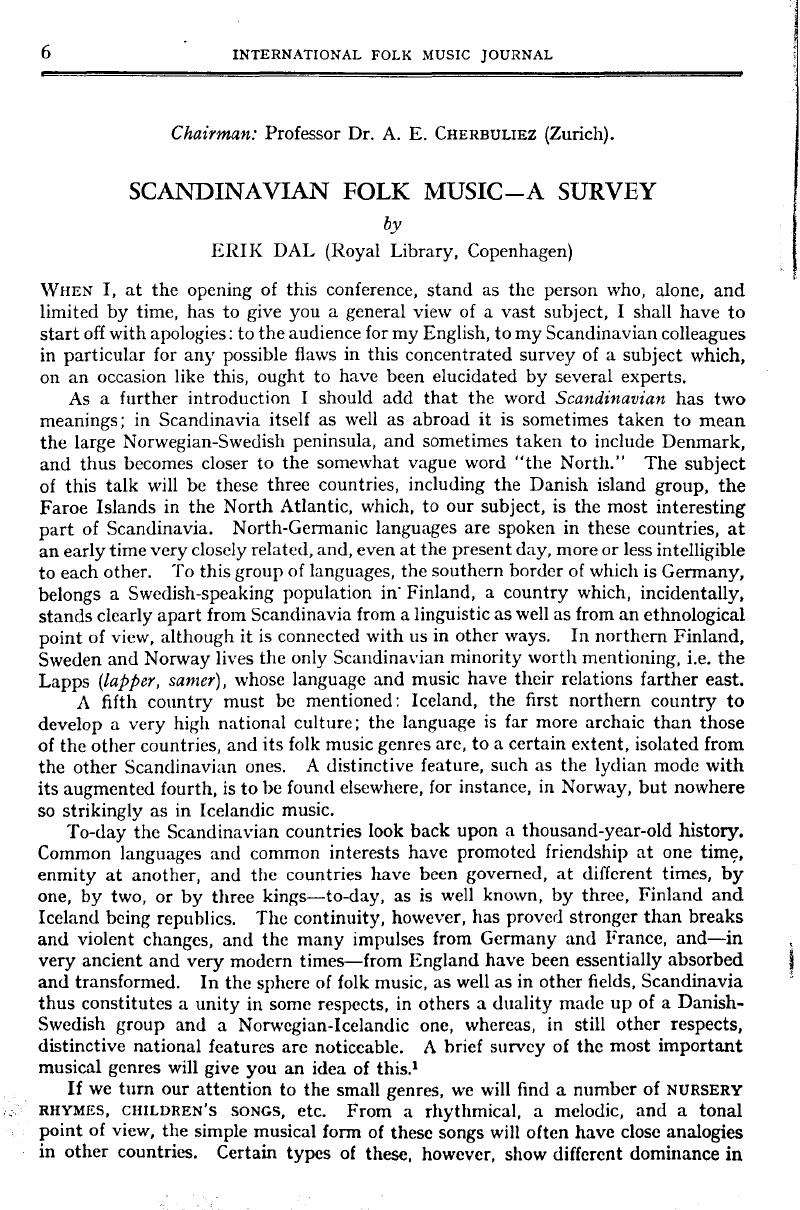1.Comprehensive bibliographical information on the folk music of the Scandinavian, as well as other, countries is given in:
Musique et chanson populaires, Société des Nations, Paris, 1934, and
Folklore musical. Paris, 1939. See also Werner Danckert:
Das europäische Volkslied, Berlin, 1939, a survey with a good bibliography, and
Nordisk Kultur, Stockholm, Oslo, København (IX A, 1931: Folkevisor, XXIV B, 1933: Dans, XXV, 1934: Musik och musikinstrumcnt). The study of Scandinavian ballads is treated in a masterly way in Sigurd Bernhard Hustvedt: Ballad Criticism in Scandinavia and Great Britain during the Eighteenth Century, American-Scandinavian Foundation, New York, 191O, and Ballad Books and Ballad Men, Cambridge, USA, 1930; folkloristic studies in general, especially in Scandinavia and Germany, in Ingcr M. Boberg: Folkernindeforskningens historie i Melletn og Nordeuropa, Copenhagen, 1953 Danmarks Folkeminder No. 60), which has a long summary in English. Bibliographical notices about Faroese balladry are given in H. Gröner-Nielsen: De fæøroske Kvadmelodiers Tonalitet i Middelalderen, Copenhagen, 1945 (Fæoensia I, with English summary). An up-to-date Norwegian bibliography is Øystein Gaukstad:: Norsk folkemusikk. Ein bibliografi, Oslo, 1951 (in Norsk musikkgranskning, 1947-50, and separately). Of bibliographical importance is also Nils Schiørring's dissertation: Det. 16. og 17. urhundrcdes verdslige danske visesang, I-II, Copenhagen, 1950. The present writer hopes to publish in the autumn of 1956 his own studies on the Scandinavian ballad under the title, Norsk folkevise/orskning siden 1800 (with a 35-page summary in English).
Google Scholar 